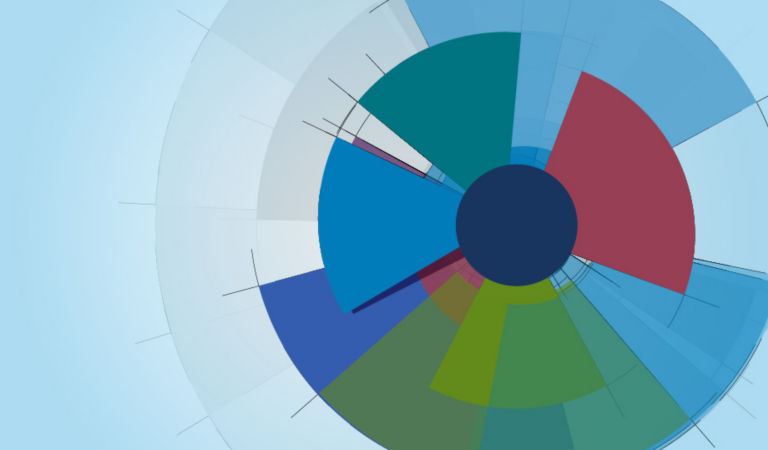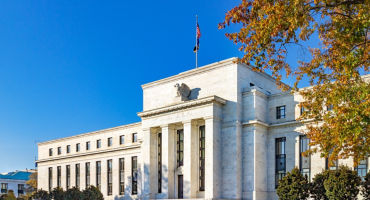Equities
Global equities (+2.8%) rose in October, marking a sixth consecutive monthly gain and reflecting robust AI infrastructure spending, strength in corporate earnings, and more accommodative US Federal Reserve (Fed) policy. Mega-cap technology firms largely delivered solid earnings and projected sustained AI investment, helping offset concerns over delayed US economic data caused by the government shutdown. The Fed cut rates by 25 basis points (bps) and announced plans to end quantitative tightening, signaling a boost to liquidity. However, Fed Chair Jerome Powell cautioned against expectations of an additional rate cut in December, emphasizing the Fed’s data-dependent stance. US President Donald Trump and Chinese President Xi Jinping held a productive meeting in South Korea, resulting in plans to lower China’s overall tariff rate from 57% to 47% and a Chinese agreement to pause export controls on rare-earth metals and purchase large quantities of US soybeans. In Japan, Sanae Takaichi was elected prime minister as the Liberal Democratic Party (LDP) formed a minority coalition with the Japan Innovation Party, moving toward a parliamentary majority. Markets rallied on the prime minister’s economic-security agenda, boosting nuclear, defense, and tech stocks, while Japanese government bond yields climbed on expectations of a more expansionary fiscal agenda to boost economic growth. The yen weakened after the Bank of Japan (BOJ) refrained from raising interest rates and adopted a more hawkish tone amid Takaichi’s accommodative fiscal and monetary policy stance.
US
US equities (+2.3%) advanced for the sixth straight month, registering a sizable 17.5% gain year to date. Growth stocks continued to outperform their value counterparts, with sustained AI optimism fueling outsized gains in the technology sector and propelling the broader market to another record high. Stock gains were also aided by favorable inflation data, the Fed’s interest-rate cut, robust earnings growth, and easing (but volatile) trade tensions between the US and China. Slightly softer-than-expected headline and core Consumer Price Index inflation was welcome news for financial markets and the Fed, which subsequently reduced interest rates by 25 bps and announced that quantitative tightening will end on December 1. Fed Chair Powell struck a hawkish tone, noting that a December rate cut is not assured. The US government shutdown surpassed the one-month mark and was on track to be the longest in history. According to FactSet, of the 64% of companies in the S&P 500 Index that had reported third-quarter earnings, the blended year-over-year earnings growth for the index was 10.7%, better than the 7.9% estimate on September 30. Notably, four of the “Magnificent 7” companies were the top contributors to the earnings growth rate of the index. The forward 12-month price-to-earnings ratio for the index stood at 22.9, well above the 10-year average of 18.6.
The government shutdown delayed the release of numerous key economic indicators on the labor market, consumer spending, inflation, and economic growth, forcing financial markets and policymakers to rely on alternative data sources that are less robust and more limited in scope than the government’s official data. Private-sector reports suggested that the labor market continued to soften amid slowing job creation, low levels of hiring and firing, and rising unemployment claims. Consumer spending appeared to rise at a solid pace, as the Chicago Fed Advance Retail Trade Summary report estimated that retail sales excluding automobiles rose 0.5% in September after a 0.7% gain in August. The Conference Board’s Consumer Confidence Index eased slightly to a six-month low of 94.6 in October. The result reflects consumers’ ongoing concerns about the job market outlook, even as improving views of their financial situation augmented purchasing plans. Housing market data was mixed. In September, a bloated inventory of new homes helped to cool prices, while existing-home sales were boosted by a decline in mortgage rates. However, anxiety about jobs posed a headwind to housing demand as pending home sales stalled.
The manufacturing sector continued to contract, with the Institute of Supply Management (ISM) Manufacturing Index dipping slightly to 48.7 in October. Encouragingly, all four demand indicators improved but were offset by contracting production and inventories. The services sector decelerated in September amid softening demand and rising prices. The ISM Services Index slid to 50.0; hiring was subdued, the business activity index subcomponent fell into contractionary territory for the first time since May 2020, and a sharp drop in new orders erased almost all the gains in the prior month. The NFIB Small Business Optimism Index eased to a three-month low of 98.8 amid heightened uncertainty among business owners, although 68% of owners rated their business as excellent or good.
Within the S&P 500 Index (+2.3%), 6 of the 11 sectors posted positive results for the month. Information technology (+6.2%) was the best-performing sector, led by semiconductors & semiconductor equipment (+11.3%) and technology hardware, storage & peripherals (+7.2%). Health care (+3.6%), consumer discretionary (+2.4%), and communication services (+1.9%) also outperformed. Materials (-5.0%) was the worst-performing sector. Financials (-2.8%) and consumer staples (-2.3%) also lagged the index.
Europe
European equities (+2.5%) advanced in October. According to Eurostat, the eurozone economy grew slightly faster than expected at 0.2% in the third quarter, with French output expanding at the quickest pace since 2023. Additionally, eurozone business activity unexpectedly accelerated in October, as the largest increase in new orders in two-and-a-half years boosted the HCOB Flash Eurozone Composite Purchasing Managers’ Index (PMI) to a 17-month high of 52.2. Notably, German output grew at the quickest pace in 29 months, helping to offset a fourteenth consecutive contraction in French business activity amid ongoing political turmoil. Encouragingly, employment increased in October following a slight decline in September, with the services sector adding jobs at the fastest rate since June 2024. Against the relatively positive economic backdrop, the European Central Bank (ECB) held interest rates steady at 2% for its third consecutive meeting, with investors speculating that the rate-cutting cycle has ended. Annual eurozone headline inflation dipped to 2.1% in October, while core inflation remained steady at 2.4%. The US cancelled a planned summit between President Trump and Russian President Vladimir Putin after diplomatic negotiations between the two countries failed to alter Russia’s hardline stance on Ukraine. According to LSEG, third-quarter earnings for companies in the STOXX 600 Index are forecast to increase 0.4% from a year earlier.
Europe’s manufacturing sector stagnated after a slight deterioration in September; the HCOB Eurozone Manufacturing PMI edged up to a neutral level of 50.0 in October on a modest increase in output, but new orders flatlined and employment fell. A renewed rise in input costs coincided with the first increase in output prices in six months. The HCOB Flash Eurozone Composite PMI for October revealed that activity in the services sector was the highest since August 2024. Input cost inflation eased for the second straight month, but output prices rose at a sharper pace. The European Commission’s Economic Sentiment Indicator advanced to 96.8 in October as industry and consumer confidence strengthened.
Germany’s (-0.3%) economy stagnated in the third quarter amid a decline in exports. Optimism about the potential benefits of Germany’s massive government stimulus helped to lift the ZEW Indicator of Economic Sentiment slightly higher in October despite uncertainty surrounding global trade and the implementation of the government investment program. The UK’s (+4.2%) economy grew only 0.1% in August, weighed down by prospective tax increases and high interest rates. However, the S&P Global Flash UK PMI Composite Output Index indicated that business activity regained some momentum in October, as manufacturing output expanded for the first time in 12 months. Annual headline inflation remained at 3.8% in September, below estimates and bolstering expectations that the Bank of England could cut interest rates in December to boost the country’s lackluster economy. In France (+2.8%), Sébastien Lecornu was reappointed as prime minister and narrowly survived two confidence votes after he suspended the controversial pension reform plan. Despite significant political upheaval, France’s economy grew at a faster-than-expected pace of 0.5% in the third quarter as exports surged.
Pacific Basin
Pacific Basin equities (+5.3%) rose over the month. In Japan (+7.9%), Sanae Takaichi was elected as Japan’s first female prime minister after her LDP and the Japan Innovation Party agreed to form a coalition government. Takaichi is expected to usher in a return to more accommodative fiscal and monetary policy to stimulate an economy beset by sluggish growth and rising inflation. Her pro-growth stance raised concerns about higher debt issuance and inflationary pressures and triggered sharp market reactions, with the yen and long-term bonds falling and equities surging. Despite dissent from two board members, the BOJ held its benchmark interest rate at 0.5%, as expected. BOJ Governor Kazuo Ueda hinted at a potential interest-rate hike in December or January, although the decision on timing ultimately hinges on the prevailing market and economic conditions, including the level of the yen, the wage outlook, and inflation. Core inflation in Tokyo (excluding fresh food) accelerated to 2.8% in October, but stable services inflation gave the BOJ greater flexibility on the timing of the next rate increase. Additionally, a stronger-than-expected 2.2% rebound in industrial production in September reinforced the BOJ’s view that downside risks to economic growth are easing. Robust demand for semiconductors and electronic components boosted Japanese exports by 4.2% year over year in September, ending a five-month decline. However, a 13.3% drop in shipments to the US contributed to a ¥234.6 billion trade deficit and heightened concerns about the broader economic impact of tariffs.
In Australia (+0.2%), the Reserve Bank of Australia (RBA) held its cash rate at 3.6%, citing persistent inflation risks and a still-tight labor market as reasons for caution. Some economists reduced their expectations for further rate cuts this year after third-quarter inflation accelerated at a surprisingly strong pace. Compared to the previous quarter, core (trimmed mean) and headline CPI rose 1.0% and 1.3%, respectively — the fastest pace since March 2023. Household spending increased less than anticipated, rising only 0.1% in August, while unemployment unexpectedly advanced to a four-year high of 4.5% in September. RBA Governor Michele Bullock indicated that unemployment was not significantly above the RBA’s forecast of 4.25% and that forward-looking indicators of labor demand pointed to a resilient labor market. Nevertheless, the mixed inflation, spending, and labor market results highlighted the competing forces that are keeping policymakers cautious ahead of their November meeting.
In Singapore (+0.4%), the Monetary Authority of Singapore (MAS) held its policy rate steady, citing above-forecast economic growth and easing trade uncertainties following recent global trade agreements. Although it remains wary of tariff headwinds, the MAS anticipates that the economy will expand at an above-trend pace of 3.9% in 2025. Preliminary third-quarter GDP increased 1.3% compared to the previous quarter, well above expectations of 0.6% but slightly slower than growth of 1.5% in the second quarter. Core inflation edged up to 0.4% in September, marking a slight acceleration after two months of easing but still at the low end of the MAS’s forecast range.
Emerging Markets
Emerging markets (EM) equities (+4.6%) rose in October, led by Asia and followed by Latin America, and Europe, the Middle East, and Africa (EMEA).
In Asia (+5.3%), China (-3.9%) ended lower following significant gains in each of the previous five months. Trade tensions with the US escalated before face-to-face talks between Chinese President Xi and US President Trump at the end of the month yielded reduced US tariffs on exports from China in exchange for a pause in Chinese export controls on rare-earth metals, resumed purchases of US soybeans, and a pledge to crack down on the illicit fentanyl trade. Chinese exports to the US fell 27% in September compared to a year ago, but growth in overall exports surged to a six-month high. Third-quarter GDP growth eased to 4.8% year over year as a weak domestic economy, underscored by lackluster consumer demand and contracting business investment, contrasted with better-thananticipated exports and industrial production. In October, factory activity shrank for the seventh straight month, as the official manufacturing PMI fell to a six-month low of 49.0. The slumping property market remained a key drag on the economy, with new-home prices in September falling at the fastest pace in 11 months. In Taiwan (+10.8%), strong global AI demand lifted industrial production 15.5% year over year in September, with exports growing less than expected but still rising 33.8% from a year earlier. South Korea (+24.5%) reached a trade deal with the US, which significantly reduced US tariffs in exchange for South Korea’s commitment to invest US$350 billion in the US.
In Latin America (+1.7%), Brazil (+1.6%) rose as the US Senate approved a measure to roll back the 50% tariffs imposed on Brazil in July. Brazilian exports grew 7.2% in September from a year earlier as larger shipments to destinations like China and Argentina offset a 20.3% decline in exports to the US. Economic activity increased less than expected in August, as the IBC-Br index, a proxy for GDP, rose 0.4% from the previous month versus expectations of 0.6%. The central bank maintained its hawkish stance and kept monetary policy very tight, with inflation in September ticking up to 5.2% year over year after the expiration of a temporary energy credit led to sharply higher electricity costs. Mexico’s (+0.4%) preliminary third-quarter GDP contracted 0.3% from the previous quarter amid a sizable 3.6% year-over-year decline in industrial activity. Annual inflation accelerated to 3.8% in September but was slightly below expectations and remained within the central bank’s target range.
In EMEA (+1.6%), OPEC+ members agreed to raise oil output by 137,000 barrels a day in November, the same increase as the previous month, citing a steady global economic outlook. Saudi Arabia’s (+1.0%) preliminary third-quarter GDP grew 5% from a year earlier, as oil-related activity surged 8.2% and non-oil activity increased 4.5%. In the United Arab Emirates (+4.5%), the central bank cut interest rates by 25 bps for the second straight month, to 3.90%, the lowest since 2022. In September, the non-oil private sector expanded at the fastest pace in seven months, driven by a sharp rise in new business.
Fixed Income
Market volatility rose sharply early in the month amid escalating trade tensions. Monetary policy paths diverged across major central banks, and sovereign yields broadly declined. Fiscal uncertainty amid the US government’s shutdown dampened market sentiment, while credit spreads widened unevenly across sectors.
US economic data, constrained by the government shutdown, indicated stable business conditions but weaker consumer sentiment. Regional manufacturing surveys signaled gradual stabilization, supported by increases in shipments and new orders, even as overall activity stayed below the expansionary threshold. Across the eurozone, economic growth edged higher on the back of resilient labor markets and a mild rebound in retail activity, although momentum remained uneven across countries. German inflation ticked up despite factory orders and industrial output falling further, underscoring sustained strain on manufacturing. Sentiment indicators were mixed; forwardlooking confidence improved, while assessments of current conditions worsened. UK inflation held steady and industrial output firmed, but construction lagged, highlighting sectoral imbalances in the recovery. China’s economy lost momentum as manufacturing contracted further, but the impact was partly cushioned by a stable services sector and GDP resilience. Chinese consumer prices declined, underscoring weak domestic demand. Japan posted mixed economic results, although industrial output and machinery orders rebounded after prior production slumps. Australia grappled with higher inflation and a weakening labor market, while Canada posted strong job gains despite manufacturing headwinds.
The Fed and the Bank of Cananda cut interest rates by 25 bps, while the Reserve Bank of New Zealand eased by 50 bps. Most other major central banks left policy rates unchanged.
Global sovereign yields largely declined in October. US Treasury yields fell across the curve on safe-haven demand amid the government shutdown concerns and softer consumer sentiment. In Europe, UK gilt yields dropped sharply after inflation undershot expectations and as signals of fiscal restraint surfaced ahead of the November budget. In APAC, the Australian curve flattened as front-end yields rose on stronger inflation, suggesting the RBA may pause its easing cycle, while long-dated Japanese government bonds slipped amid robust demand. EM yields ended broadly lower, with South Africa outperforming on attractive carry and fiscal optimism. In Latin America, Mexican yields declined as markets priced in further interest-rate cuts by the central bank. The Bloomberg TIPS Index delivered a 0.35% total return, and the 10-year breakeven inflation rate decreased by 5 bps, to 2.32% during the month.
Global credit underperformed duration-equivalent government bonds as spreads widened. Within securitized sectors, agency and commercial mortgage-backed securities outperformed duration-equivalent government bonds, while asset-backed securities underperformed. Within EM, local markets debt (+0.46%) underperformed external debt (+2.13%), in US-dollar terms. Spread narrowing and a decline in US Treasury yields supported external debt performance. EM currencies depreciated, while movement in EM rates contributed favorably to results in local markets.
Currencies
The US dollar strengthened against most developed market currencies. Despite a 25 bps interest-rate cut, Fed Chair Powell tempered expectations for another cut in December. Among the G10 countries, the Japanese yen led the losses, as the prospect of an imminent rate hike by the BOJ faded amid political uncertainty. EM currencies were mixed. The Colombian and Chilean pesos advanced on high carry, while the South Korean won slipped under pressure from ongoing US trade negotiations. The Turkish lira extended its recent decline after the central bank cut rates by 100 bps.
Commodities
Commodities (+1.4%) increased in October, supported by gains across industrial metals, precious metals, and energy. Agriculture & livestock modestly detracted from overal performance.
Energy (+0.5%) rose over the period, as heating oil (+4.4%), gas oil (+3.7%), and gasoline (+1.8%) posted gains. Despite rising US consumption, crude oil (-1.0%) declined as inventories grew more than expected. Russia continued to produce oil at levels close to its OPEC+ quota despite ongoing sanctions. At the same time, oil markets reacted to the announcement of a smaller-than-anticipated increase in November output from OPEC+, which fueled supply-side uncertainty. Meanwhile, the US and China — two of the world’s largest oil consumers — introduced new port fees on cargo ships, which could disrupt global shipping lanes, increase freight costs, and potentially affect the flow of energy and goods worldwide. Natural gas (+4.4%) was driven higher by near-record flows to LNG export terminals, a drop in US production in October, and higher short-term demand forecasts. However, forecasts for warmerthan-average US temperatures may temper heating demand in the near term.
Industrial metals (+6.2%) rose during the month. Aluminum (+7.9%) rallied on tightening supply and rising demand from clean-energy industries like electric vehicles (EVs) and renewable power. Reduced smelting output in China from power shortages and environmental regulations, along with political unrest in Guinea, threatened bauxite exports and supported aluminum prices. Copper (+6.5%) rose following reports of progress in trade negotiations between the US and China. Additionally, leading copper mines — Grasberg, Kamoa Kakula, and El Teniente — faced operational setbacks that have altered global supply forecasts for 2025 and 2026. Despite broader market volatility, zinc (+4.5%) rose on steady industrial demand, particularly from construction and manufacturing. Lead (+1.7%) edged higher after the Shanghai Metals Market reported low domestic inventories, signaling tighter supply conditions. Nickel (-0.2%) moved slightly lower as the market grappled with shifting US trade and spending policies, the expiration of tax credits for EVs, US trade tensions with China, and persistent global oversupply.
Precious metals (+3.5%) ended higher. Silver (+3.6%) was supported by strong industrial demand, particularly from the solar energy and EV sectors, as well as ongoing supply constraints. Gold (+3.5%) benefited from demand for safe-haven assets due to escalating geopolitical tensions, including the Russia-Ukraine war and continued trade disputes between the US and China.
Agriculture & livestock (-0.1%) was flat. Soybeans (+9.9%) and wheat (+5.6%) traded higher on renewed optimism surrounding US-China trade talks, which increased expectations that China will delay its rare-earth export controls and resume large-scale purchases of American farm goods. Coffee (+4.9%) continued to increase as US tariffs on imports from Brazil, Colombia, and Vietnam pushed costs higher, while weather disruptions and La Niña conditions further strained supply chains. Lean hog (-8.1%) prices declined due to falling hog prices in China, driven by persistent oversupply and weak domestic consumption. Cocoa (-8.6%) fell as elevated chocolate prices dampened demand, while supply prospects improved. Sugar (-12.8%) was pressured by signs of higher Brazilian output and expectations for a bumper crop in India following strong monsoon rains.






























